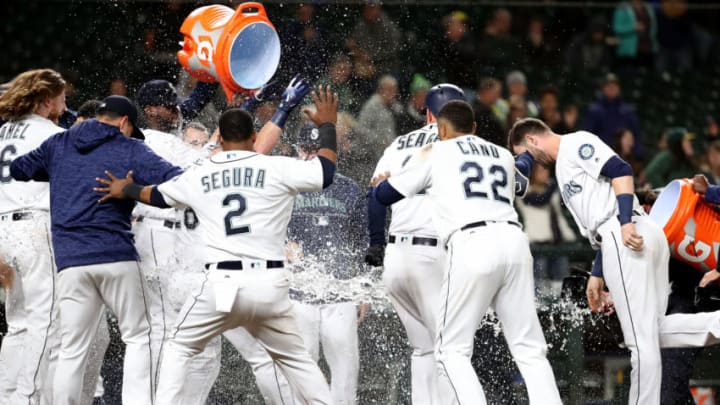
2018 Mariners: What Went Wrong
Neither of the two big trades the Mariners made in the preseason worked out this year. Ryon Healy hit 23 home runs, but they came with an ugly .277 on-base percentage. He finished with a 90 wRC+, which meant he was 10 percent below average on offense after league and ballpark effects were accounted for.
Along with his below average hitting and poor base running, Healy is one of the worst defensive first basemen in baseball (according to Fangraphs). He finished the year with -0.8 WAR. That’s below replacement-level. Thanks mainly to Healy, Mariners first basemen finished 27th of the 30 MLB teams in Fangraphs WAR.
The other new edition was Dee Gordon. He started the season hot. In his first 30 games, he hit .355/.380/.452. A big part of it was a .417 Batting Average on Balls In Play (BABIP). His career rate is .338. Then came the big fade. In his last 111 games, Gordon hit .243/.262/.319, with a BABIP of .273.
Gordon wasn’t as good as he looked when the balls were dropping in and wasn’t as bad as he looked when the balls weren’t dropping. It wasn’t all about BABIP, though. He also had the lowest walk rate of his career, with just nine free passes in 588 plate appearances. No qualifying hitter walked less often than Dee Gordon in 2018.
Because of the Cano suspension, Gordon ended up playing more games at second base than center field, where he was originally expected to spend the whole season. That meant more time in center for Guillermo Heredia, who was barely above replacement level. With Gordon and Heredia getting the bulk of the playing time in center field, the Mariners finished 28th of 30 teams in WAR at that position. Only the White Sox and Marlins were worse.
After six years of being an above-average player who averaged 4.3 WAR per season from 2012 to 2017, Kyle Seager had the worst full season of his career. He was still good with the glove at third base, but well below average at the plate, hitting .221/.273/.400 (84 wRC+).
The left-handed hitting Seager saw teams shift against him more than ever in 2018. His percentage of plate appearances against the shift has increased each of the last four seasons from 36 percent in 2015 to 47 percent to 55 percent to 71 percent this year and he’s been particularly bad hitting against the shift the last two seasons. It’s likely no coincidence that he’s had his two lowest BABIPs the last two years. He also had the lowest walk rate of his career. It all added up to an ugly season with the bat.
Catcher Mike Zunino’s season was similar to Seager’s. He was good behind the plate, but struggled at the dish (.201/.259/.410, 84 wRC+). Zunino has been below average on offense in four of his six major league seasons. In 2016 and 2017, it looked like he had made real progress in plate discipline with walk rates of 11 percent and 9 percent. This year, his walk rate dropped back to 5.9 percent and his on-base percentage took a nosedive.
One of the saddest developments in Seattle over the last few years has been the demise of the pitcher known as “King” Felix Hernandez. The King was the best pitcher in baseball from 2006 to 2015, according to Fangraphs WAR, but has been below average on the hill in each of the last three years. The 2018 season was his worst yet, as he had a 5.55 ERA and 5.18 FIP in 155.7 innings.
Another struggling starter was Erasmo Ramirez, who had a 6.50 ERA and 6.69 FIP in 45.7 innings. He allowed 14 home runs in just 10 starts. Ramirez made two appearances in April before hitting the DL for three months. He had some good starts in August and September, but closed out the season by allowing 10 earned runs in his last two starts.
